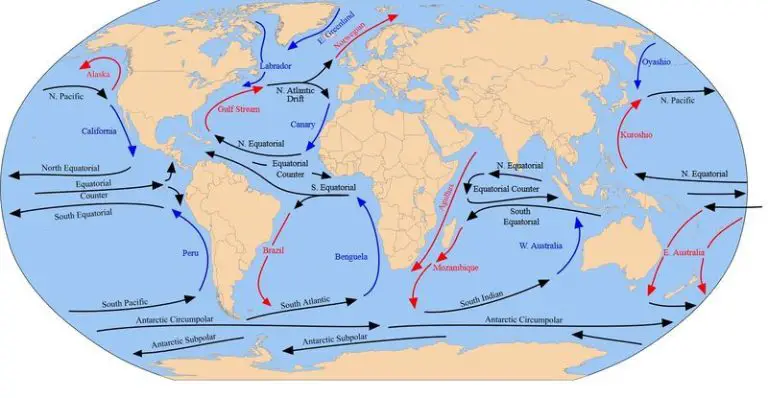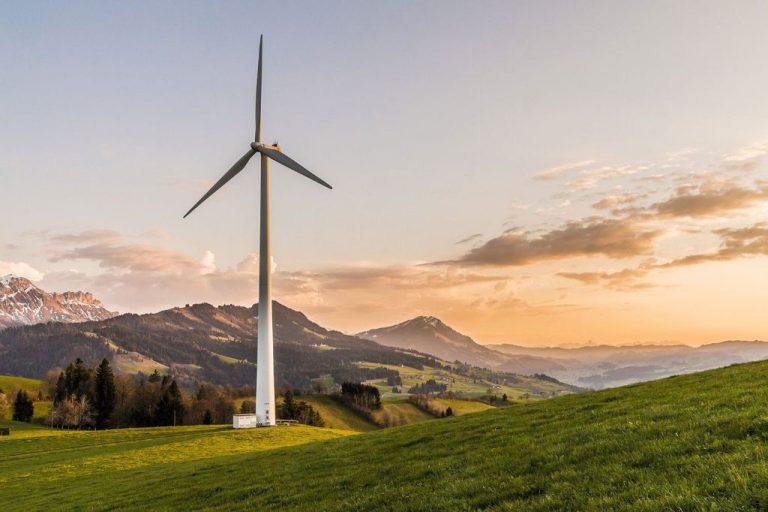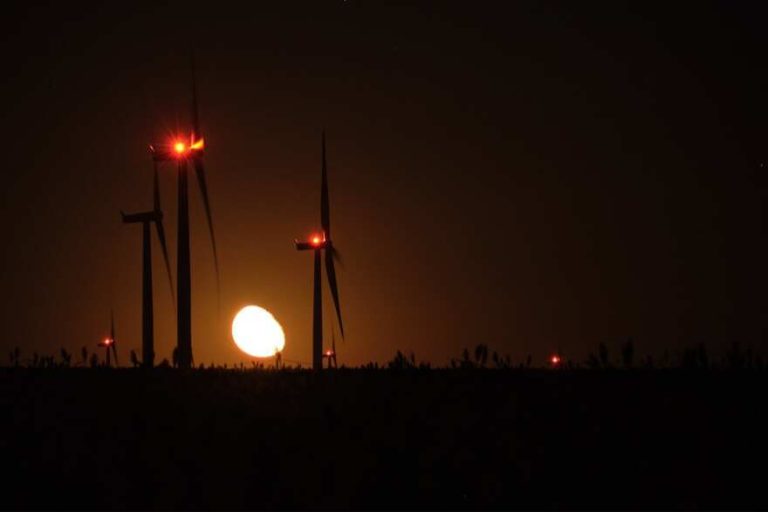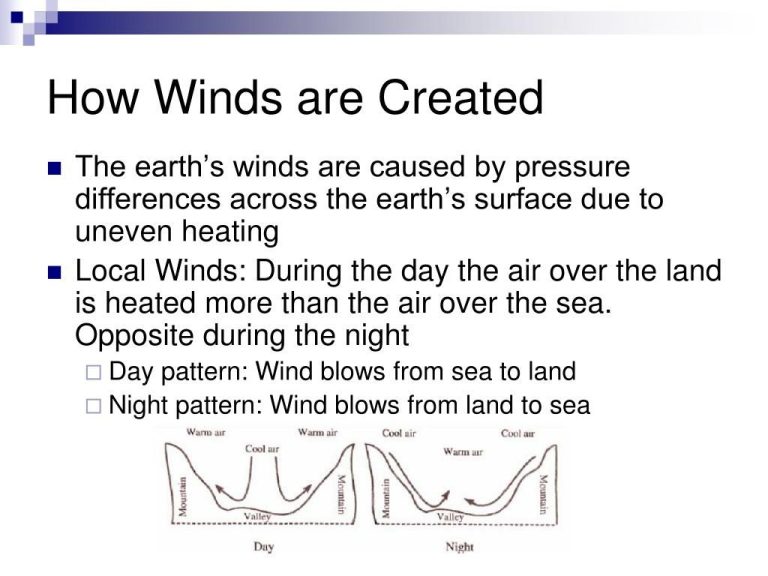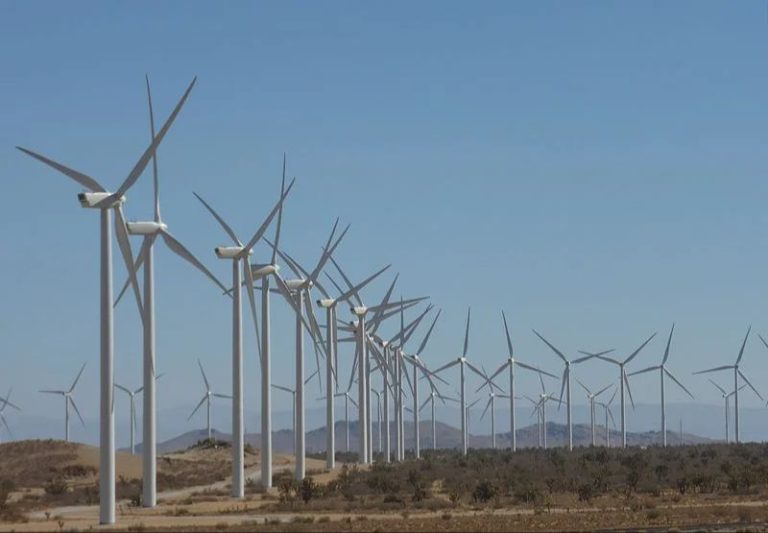How Much Of California’S Power Comes From Wind?
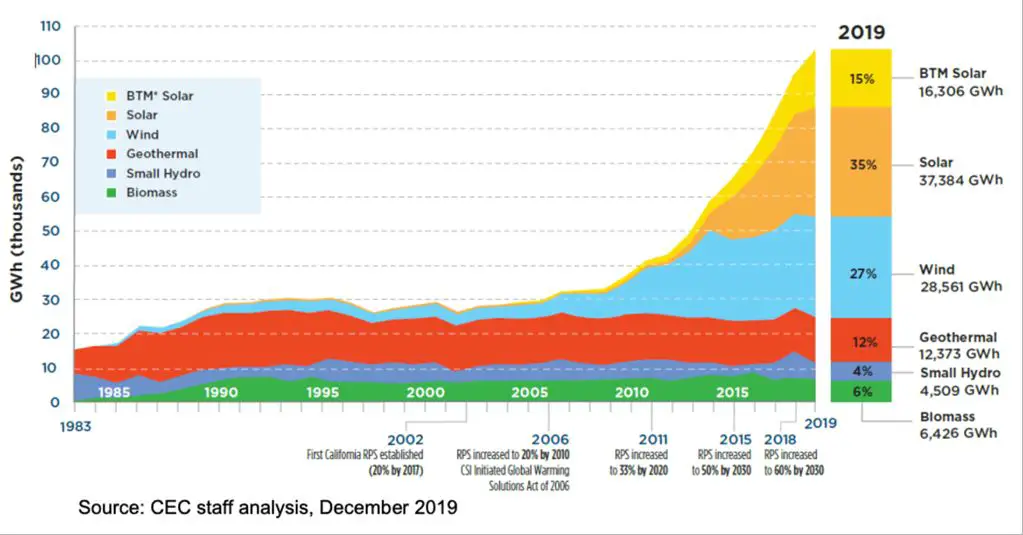
California has been a leader in renewable energy adoption for decades, with an emphasis on growing its wind power resources. Wind power currently accounts for a relatively small but rapidly expanding percentage of California’s electricity generation. While fossil fuels like natural gas still dominate the state’s energy mix, wind and other renewables are expected to provide an increasing share of California’s electricity needs in the coming years.
According to the U.S. Energy Information Administration, wind power accounted for about 10% of California’s in-state electricity generation in 2020, up from just 1% in 2001. With ample wind resources and policy support for clean energy development, wind energy in California is poised for further growth in both capacity and generation. However, intermittency and transmission constraints remain challenges to significantly scaling up wind power across the state.
California’s Electricity Mix
California has a diverse electricity generation mix, with natural gas, solar, hydroelectric, nuclear, wind, geothermal, biomass, and coal power plants. In 2020, the breakdown of California’s in-state electricity generation by source was as follows according to this chart:
- Natural gas: 41.3%
- Solar: 17.7%
- Hydroelectric: 11.3%
- Nuclear: 9.1%
- Wind: 8.2%
- Geothermal: 5.3%
- Biomass: 2.9%
- Coal: 0.1%
This represents a major shift over the past two decades, as natural gas and solar have increased their share while coal has dramatically declined. In 2001, coal accounted for 14.6% of California’s in-state generation compared to just 0.1% in 2020. Meanwhile, solar has risen from 0.5% in 2001 to become the state’s second largest electricity source.
Growth of Wind Power
Wind power generation in California has grown significantly over the past few decades. According to the California Energy Commission’s report Productivity and Status of Wind Generation in California, the state had an installed wind capacity of just 1,740 megawatts (MW) in 2001. By 2017, installed capacity had jumped to 5,555 MW. In the same period, annual wind generation grew from 2,514 gigawatt-hours (GWh) in 2001 to 17,313 GWh in 2017.
The growth trend has continued in more recent years as well. The American Wind Energy Association reports that at the end of 2020, California had installed wind capacity of 6,000 MW. In 2021, wind generation reached nearly 25,000 GWh, accounting for about 10% of California’s total in-state generation.
Several factors have driven the growth in California wind power over the past 20 years, including state renewable energy policies, federal tax incentives, and improvements in wind turbine technology that have boosted capacity factors. With strong wind resources, California still has substantial potential for continued wind power expansion.
Wind Power Potential
California has exceptional wind energy resources, which ranks among the best in the United States. According to a 2010 Stanford University study, California’s offshore regions alone could generate 100-150 gigawatts of wind power using current technology and siting restrictions. The Baja California region south of California is also estimated to have massive wind potential over 87,000 megawatts, which can help meet both California and Mexico’s renewable energy goals.
California’s abundant wind resources, combined with innovations in wind turbine technology that allow access to steadier winds at higher altitudes, means the state can continue expanding its wind generation. According to the DOE’s Wind Resource Potential Map, many regions of California are rated as “Outstanding” or “Superb” for wind energy.
By harnessing more of its world-class wind resources, California aims to reach its target of 100% clean electricity by 2045. However, growth depends on transmission infrastructure investments and siting challenges. Overall, California possesses immense untapped potential for onshore and offshore wind energy to meet rising electricity demand through renewable power.
Major Wind Farms
California is home to many large-scale wind farms that contribute significantly to the state’s renewable energy production. According to the report “Greening the Bottom Line 2012” by Environment America (https://environmentamerica.org/california/wp-content/uploads/2012/12/Greening-the-Bottom-Line-Dec2012.pdf), some of the state’s largest wind farms are located in the Montezuma Hills near Rio Vista in Solano County. These wind farms contain hundreds of wind turbines, with each turbine having a capacity of 1.5 megawatts. The report notes that the Shiloh I wind farm in the Montezuma Hills has over 100 wind turbines with a total capacity of 150 megawatts. Another large wind farm is located in the Tehachapi Pass in Kern County, containing over 4,000 wind turbines and a total capacity of 1,320 megawatts.
According to a report from the Institute for Energy Economics and Financial Analysis (https://ieefa.org/wp-content/uploads/2019/07/New-Risk-Factors-Emerge-as-GE-Shutters-California-Power-Plant_July-2019.pdf), the Gorgonio Pass in Riverside County contains one of California’s largest wind farms, generating 666 megawatts of power as of 2017. Overall, these major wind farms with hundreds of turbines each play a key role in harnessing California’s abundant wind resources.
Transmission Challenges
One difficulty facing the growth of wind power in California is transmitting wind-generated electricity from remote areas where many wind farms are located to population centers that need the power. Many prime wind resources in California are located in sparsely populated areas like the Tehachapi Mountains and Mojave Desert.
Constructing new transmission lines from these remote wind farms to major cities is challenging and time-consuming. According to the California Voice, “The state has virtually no chance of building enough power lines in time to relieve its grid bottleneck.” (California Voice, 2023)
The California Energy Commission estimates that 30 new transmission projects will be needed over the next 20 years to support the state’s renewable energy goals. However, California’s complex and lengthy permitting process hampers the quick deployment of major new transmission projects.
According to Utility Dive, “California’s transmission permitting process is not sufficient to efficiently review the number of new transmission projects in the state’s queue.” (Utility Dive, 2023)
Without upgrading the state’s aging transmission infrastructure and building new lines, it will be challenging for remote wind power to reach the major electricity load centers where it is most needed.
Environmental Benefits
Wind energy provides significant environmental benefits compared to conventional fossil fuel power plants. Wind turbines produce electricity without emitting air pollutants or greenhouse gases. According to a 2017 study, generating electricity from wind rather than fossil fuels provides major reductions in carbon emissions as well as harmful air pollutants like sulfur dioxide, nitrogen oxides, and particulate matter. Researchers found that in 2016 alone, wind power avoided over 100 million metric tons of carbon dioxide emissions in the United States.
The shift to renewable energy, especially wind, has been a major driver in reducing these emissions. Analysis shows that from 2007 to 2016, wind energy avoided more carbon dioxide emissions than any other renewable energy source in the U.S., cutting nearly 5% of the country’s total carbon emissions. The carbon reduction benefits of wind are a major reason why wind capacity in the U.S. has tripled over the last decade and continues to expand. According to an analysis from the University of Arizona, the environmental benefits of wind energy are roughly equal to the costs required to produce it, making wind a cost-effective clean energy source.
Economic Impact
Offshore wind development is expected to bring significant economic benefits to California. According to a study by E3, offshore wind in California could support over 18,000 jobs annually from 2030 to 2045. At peak construction, over 8,000 direct jobs could be created just for turbine and supply chain manufacturing and port operations. Capital investments are projected at over $145 billion from 2022 to 2045, generating state and local tax revenues of $2 billion. At scale, offshore wind electricity prices are estimated to be 5-10% lower than solar PV and onshore wind.
According to a report by the California Energy Commission, offshore wind will bring billions in infrastructure investments and thousands of jobs. At the ports that support offshore wind, operations and maintenance jobs will be created in addition to construction jobs. Furthermore, lower electricity prices from offshore wind in California could save ratepayers $1-2 billion per year.
Citations:
E3. “The Economic Value of Offshore Wind Power in California.” August 2019. https://www.ethree.com/wp-content/uploads/2019/09/2019-08-08_E3-Castle-Wind-Offshore-Wind-Value-Report-FINAL.pdf
California Energy Commission. “Preliminary Assessment of Economic Benefits of Offshore Wind.” 2022. https://www.energy.ca.gov/publications/2022/preliminary-assessment-economic-benefits-offshore-wind-related-seaport
Future Outlook
California has set ambitious goals for offshore wind energy to help meet its clean energy targets. In 2021, Governor Newsom established a goal for the state to develop up to 5 gigawatts of offshore wind by 2030. In 2022, the California Energy Commission set a longer-term goal for the state to build 25 gigawatts of offshore wind by 2045, enough to power 25 million homes.
To help achieve these goals, California has identified several promising offshore wind areas and held lease auctions for developers to build projects. Key lease areas include Morro Bay off central California, Humbolt off northern California, and areas off southern California near Los Angeles and San Diego. Major developers including Equinor, Invenergy, and RWE Renewables have acquired leases to develop projects in these areas.
However, major challenges remain in permitting and building transmission lines to bring offshore wind energy from coastal areas to population centers inland. The state estimates that reaching the 25 gigawatt goal could require investment of over $100 billion in infrastructure. But supporters argue offshore wind is critical for increasing California’s clean energy, improving local air quality near power plants, and creating economic growth and jobs.
Conclusion
In summary, wind power accounts for a growing share of California’s electricity generation, contributing around 10% of the state’s electricity supply in 2020. Major wind farms can be found in mountain passes and valleys across the state, with the largest capacity concentrated in Tehachapi, San Gorgonio and Solano. While California has significant untapped wind energy potential, growth faces challenges around transmission capacity and grid integration. Wind energy delivers valuable environmental benefits by avoiding carbon emissions and air pollution relative to fossil fuels. It also creates economic opportunities and jobs, especially in rural regions. Overall, wind power is poised to continue expanding its role in California’s move towards a clean, renewable energy future.

